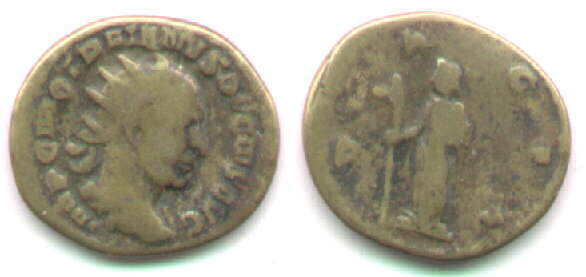 21 mm. 5:30. 3.89 grams.
21 mm. 5:30. 3.89 grams.Imitations from this period are uncommon. It was becoming harder to profit from making silver-plated coins when the official pieces were already rather low in silver content. Also, official issues were plentiful so there was less need to make unofficial coins for commerce.
Trajan
Decius (AD 249-251)
 21 mm. 5:30. 3.89 grams.
21 mm. 5:30. 3.89 grams.
Yellow brass, without traces of silver. Worn looking, perhaps a cast.
However, the edge shows no seam.
IMP C M Q TRAIANVS DECIVS AVG
/DACIA, Dacia standing holding staff with "draco"
military standard.
RIC 12b, page 121, "249-251".
21
mm. 12:00. 2.14 grams. Remarkably thin
fourree
and its official prototype.
IMP [C M Q TRAI]ANVS DECIVS AVG
/DACIA, Dacia standing holding staff with "draco"
military standard.
Prototype: RIC 12b, page 121, "249-251". AR22. 6:00.
 19-18 mm. 6:00. 2.16 grams
19-18 mm. 6:00. 2.16 grams
Hybrid. Distinctly small. Little silver remains, but clearly fourree.
IMP C M Q TRAIANVS DECIVS AVG
/VIRTVS AVGG, Virtus standing right holding vertical
spear behind
Reverse type of Philip II or Trebonianus Gallus, but not Decius.
Prier IV (6/26/1998) lot 310 was from the same dies, and the same size.
It was a very similar coin but for the weight.
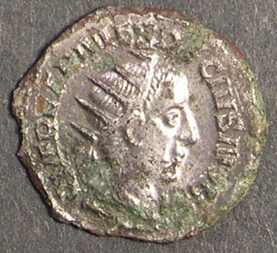
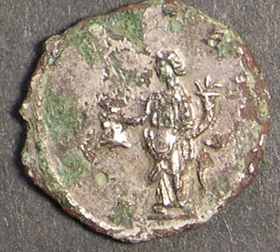 Silvered 20 mm. 6:00. 2.20 grams (very light)
Silvered 20 mm. 6:00. 2.20 grams (very light)
Herennius Etruscus, 250-252 under Trajan Decius.
HER ETR MES DECIVS NOB C
VBERI TAS AVG (very weak), Uberitas holding purse and cornucopia.
RIC 160v, page 141, with legend variety
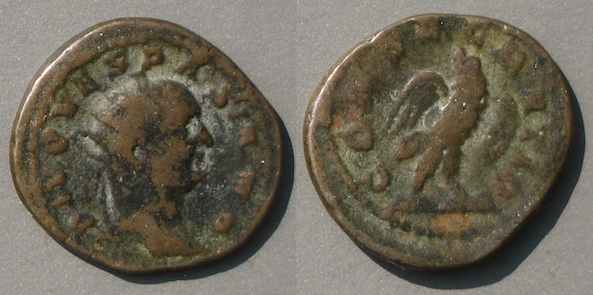 22-20 mm. 5.06 grams. Thicker than normal.
22-20 mm. 5.06 grams. Thicker than normal.
Trebonianus
Gallus (AD 251-253)
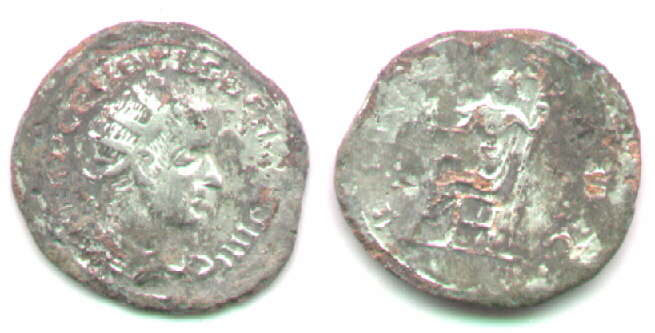 24 mm. 12:00. 3.36 grams.
24 mm. 12:00. 3.36 grams.
A larger (!) flan than the official pieces, but thin.
IMP C C VIB TREB GALLVS AVG (poorly struck, so it
is hard to read, but it is there)
/female figure seated left holding out arm with
? and vertical scepter
/legend illegible, maybe with VI and ending AVG
A common obverse legend of Gallus.
Legend correct but lettering unevenly formed -- clearly irregular,
but a very nice example.
IMP C C VIB TREB GALLVS AVG
/PAX AETERNA, Pax standing left holding olive branch
and scepter (or cornucopia)
Prototype: Sear 2788. RIC 71, page 166, "mint of Milan" undated
251-253.
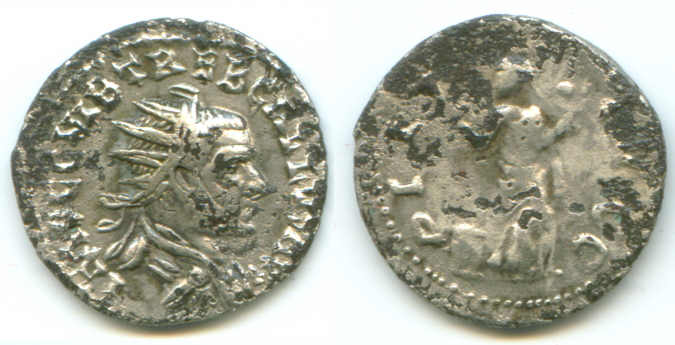 20 mm. 5:30. 3.38 grams.
20 mm. 5:30. 3.38 grams.
IMP C C VIB TREB GALLVS AVG
/PIETAS AVG, Pietas standing, raising both hands. Altar at
feet left.
Prototype: Sear 3.9242 (no photo), RIC 72 (Milan) page 166, plate
13.16.
Gallus is pretty late for silver-plated
imitations.
The profit must have been diminishing -- there was less and less silver
in the official coins!
Return to the index page on Severan and third-century imitations.
Return to the main Table of Contents page on ancient Roman imitations.